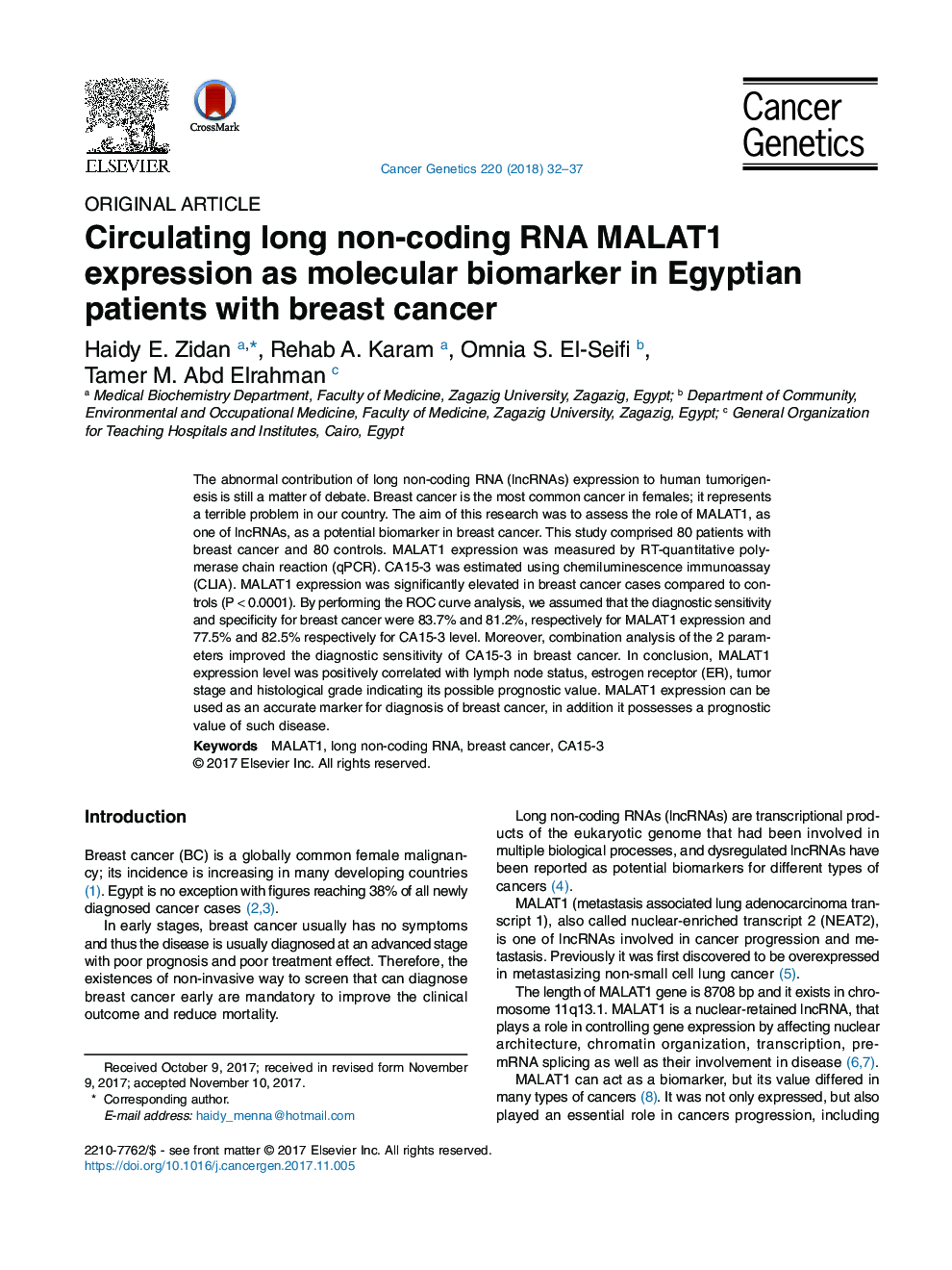| Article ID | Journal | Published Year | Pages | File Type |
|---|---|---|---|---|
| 8433858 | Cancer Genetics | 2018 | 6 Pages |
Abstract
The abnormal contribution of long non-coding RNA (lncRNAs) expression to human tumorigenesis is still a matter of debate. Breast cancer is the most common cancer in females; it represents a terrible problem in our country. The aim of this research was to assess the role of MALAT1, as one of lncRNAs, as a potential biomarker in breast cancer. This study comprised 80 patients with breast cancer and 80 controls. MALAT1 expression was measured by RT-quantitative polymerase chain reaction (qPCR). CA15-3 was estimated using chemiluminescence immunoassay (CLIA). MALAT1 expression was significantly elevated in breast cancer cases compared to controls (Pâ<â0.0001). By performing the ROC curve analysis, we assumed that the diagnostic sensitivity and specificity for breast cancer were 83.7% and 81.2%, respectively for MALAT1 expression and 77.5% and 82.5% respectively for CA15-3 level. Moreover, combination analysis of the 2 parameters improved the diagnostic sensitivity of CA15-3 in breast cancer. In conclusion, MALAT1 expression level was positively correlated with lymph node status, estrogen receptor (ER), tumor stage and histological grade indicating its possible prognostic value. MALAT1 expression can be used as an accurate marker for diagnosis of breast cancer, in addition it possesses a prognostic value of such disease.
Related Topics
Life Sciences
Biochemistry, Genetics and Molecular Biology
Cancer Research
Authors
Haidy E. Zidan, Rehab A. Karam, Omnia S. El-Seifi, Tamer M. Abd Elrahman,
